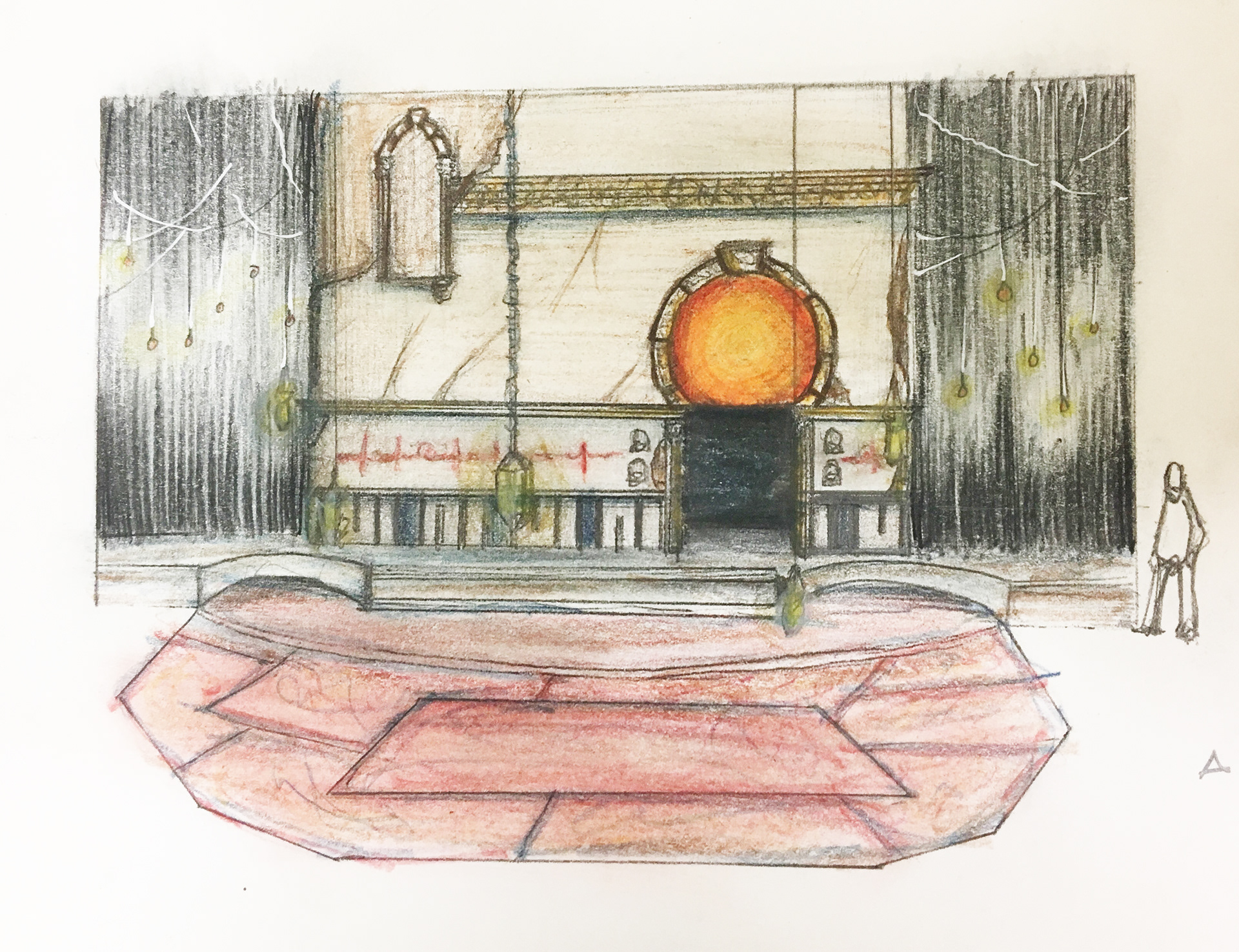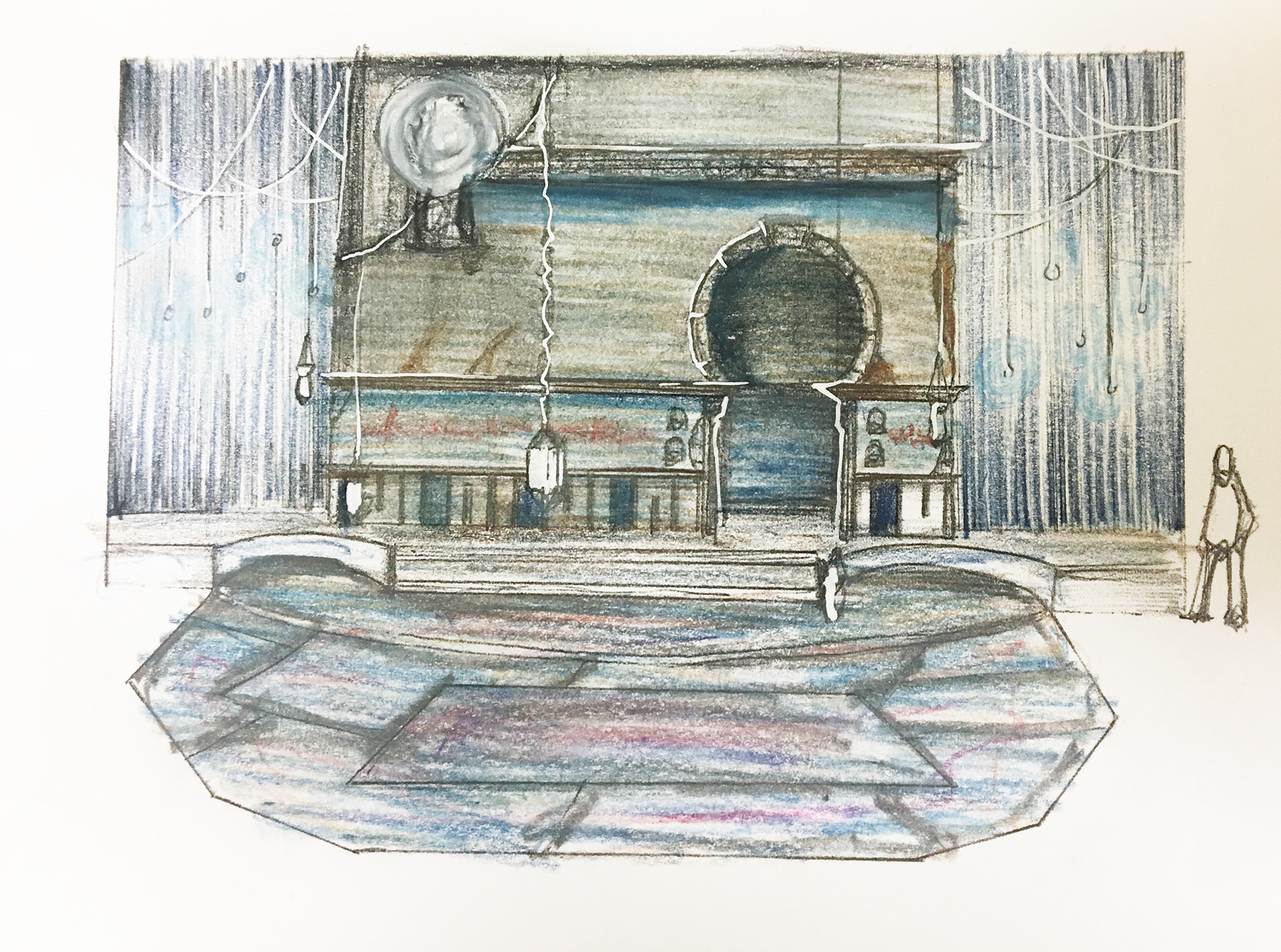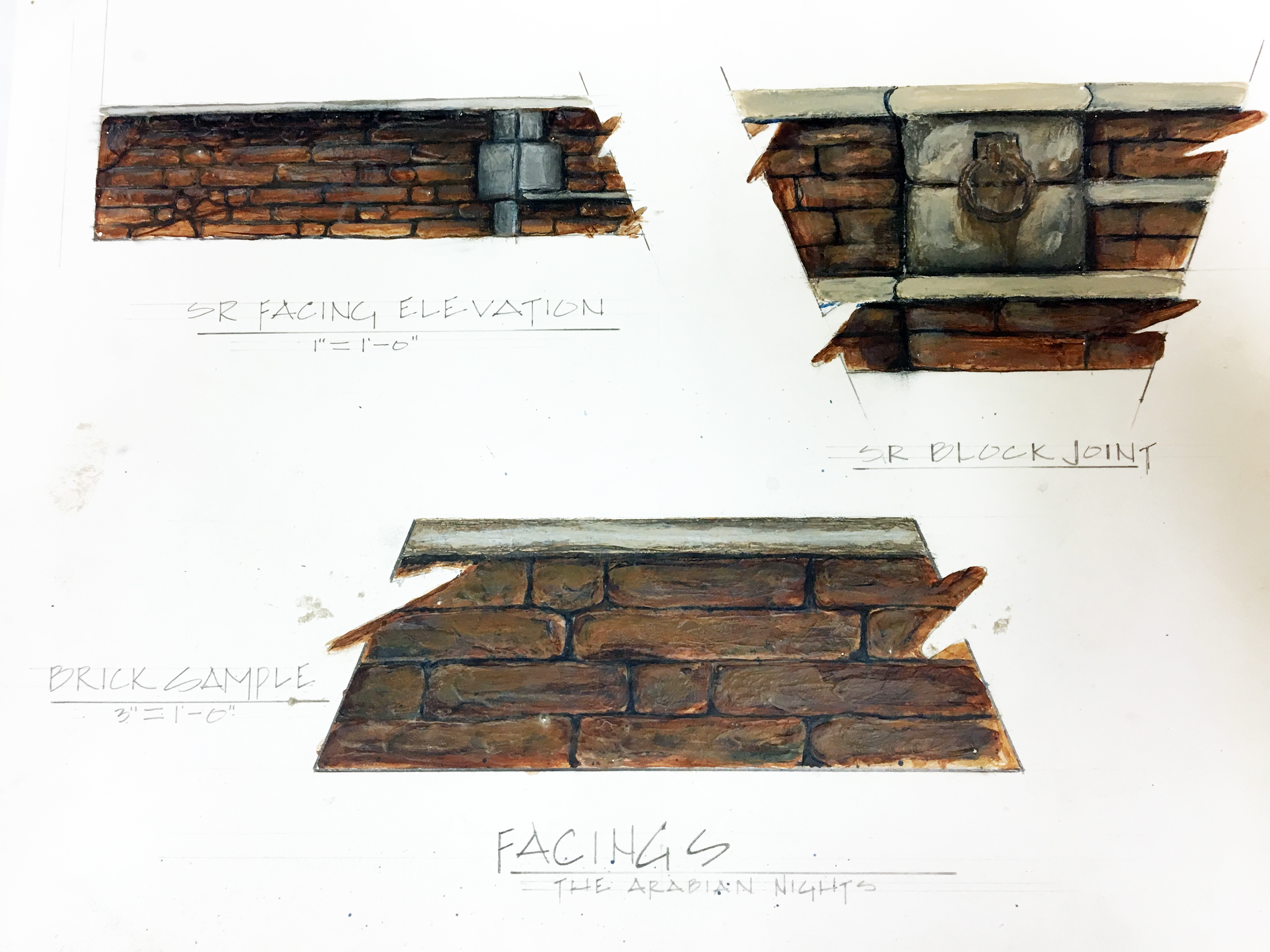About the Design
Mary Zimmerman's The Arabian Nights uses her unique form of ensemble theatre to tell stories that connect us to the world that she creates. Dale Rose and I started working on this design almost a year in advance. He is a fabulous director with a great talent for working with ensembles. We knew this would be a great challenge, but we were blessed with a great team and even better performers.
The Arabian Nights weaves so many stories together to build the world of the play. We wanted to introduce that idea into the design. I built the design based heavily off of conversations I had with Dale. He was so interested in different aspects of Middle Eastern textures and architecture. In one meeting he just handed me a clay pot to discuss textures and feelings. It was a great collaborative experience.
I used research of many different buildings from Norther Africa across the Middle East to create a facade that was a collage of many of the different buildings that I had seen. Just as all the stories came together we developed a facade with a host of stories. It was also in a crumbling state. We wanted to give the feeling that when the audience entered the room that it looked like it was under construction or had been left alone for quite some time. The floor was covered in drop clothes with a pin spot on a book and lanterns hanging only a few inches from the floor.
As the actors entered the space they pulled away the cloths to reveal a stage covered in carpets. They danced and musicians began to play (we had two musicians that composed and performed original music). One of the issues that we ran into was where to store props/costumes/toys. We didn't want the actors to have to leave the stage to get something. We created two baskets that could hold all the items and kept them always accessible. Ottomans were used to create levels and develop stories. At one point they were lined up to create a boat and china silks waved as water. It was very effective.
Another interesting aspect to the design was the use of naked light bulbs of various blues, ambers, and clears that hung in a dome over the audience. At times we could use them to create a starry effect. I think the audience hardly noticed them at first, but we created an "ooooh" moment at the end of the act one when we dimmed the stage lighting and raised the bulbs. It is always a joy when an audience is surprised by a design.




